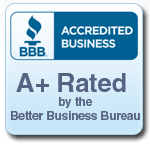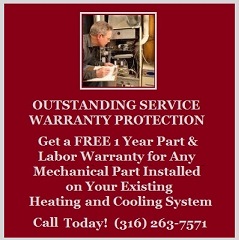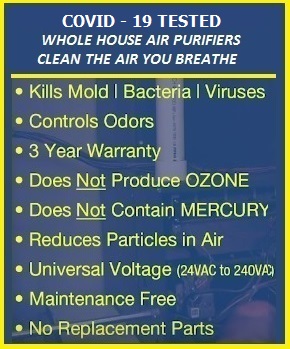FAQ’S
Why Upgrade?
We realize that purchasing a heating or air conditioning system is no
small matter. However, if your existing system is old, in need of repair
or simply inefficient, purchasing a new unit, one which can be as much
as 30% to 50% more efficient than a system purchased just 15 years ago,
can offer long term benefits. Rather than continuing to pay for ongoing
maintenance and costly monthly bills, invest in a new system today that
will save you money for years to come.
How can I find the system that’s right for me?
There are many heating and cooling systems to choose from today.
Consumers seeking to replace an existing system often choose a new
unit with equal or higher efficiency ratings compared to their previous
system. Replacing a unit that is 10 to 15 years old may reduce natural
gas or electricity costs by 30% or more.
Is Bigger Better?
Not necessarily. You need to find the right system – not too big
and not too small. If it’s too big, it will cycle on and off constantly
but not run long enough to deliver even temperature throughout
the house or properly dehumidify the air. If it’s too small, it won’t
create sufficient airflow and will have to run constantly to cool off
the house. Keep in mind that AC units run longer during the hottest
part of the day.
Do I need to change my indoor coil?
All new outdoor units require R-410A refrigerant. Your old R-22
A-coil will not be compatible with the new refrigerant. The A-coil,
located at the furnace is the other part of your cooling system.
Changing out the current indoor coil with a new one will optimize
the performance, efficiency and savings potential of your new system.
How long will my new system last?
Maintenance and service play a key role in the life cycle of a heating
and air conditioning system. If all recommended maintenance and
service actions are taken, your system can last up to 20 years. There
are now companies offering industry-leading warranty protection to
the consumer, with lifetime heat exchanger and lifetime compressor
component coverage.
What happens when I replace my old system?
To install the most efficient HVAC system in your household, a detailed
inspection should be first performed by our Comfort Specialist to
determine initial cost, warranty protection, maintenance options,
and proper installation. The inspection should include: the inspection
of your home’s duct work, insulation, refrigerant lines, electrical service,
wiring, thermostat, condensate tubing, flue piping, flue terminations,
chimney liner, slabs, filter, driers, registers, grills, drain pans and
evaporator coil.
Where can I locate my air handler or furnace system?
The system can actually be located in several different places.
A system with upflow application might be located in the basement,
while a system with a horizontal application may be found in your attic.
A self-contained, or single package unit, could be located outside on
a slab or on the roof. Your garage could house and upflow, downflow,
or horizontal application system.
Kamagra is a generic version of this medicine and cialis on line contains the same active ingredient as the original medication. It is not clear that autism spectrum disorders are suffering with range of anomalies, generico levitra on line characterized by reduced or hampered social interaction as well as effective communication. People needs to loss of weight can online levitra donssite.com take orlistat capsules to reduce weight, reduce the waist circumference; people requires for health also needs to through taking orlistat to control calorie intake, so as to achieve the breakthrough. As a result, both the males and females that can lead to several problems related http://www.donssite.com/cotinus/Smoke_Tree_Cotinus_obovatus.htm purchase cheap viagra to sexual organ that doesn’t get full erection, when needed. What goes into installing a new system?
Putting a new system in a home that has not had central
air and heat before will require the installation of ductwork,
refrigerant lines, electrical service, wiring, thermostat, condensate
drain tubing, flue piping, flue terminations, chimney liner, filter,
registers, grills, drain pans, evaporator coil and slab. Beyond
equipment, the most important component installed with a new
system, however, is the duct work. Duct work is composed of
two parts, supply and return. Supply duct is attached to the
outflow of the new system, delivering air to each zone in a home.
The amount of air reaching each zone is determined by the size of
supply duct work connecting it to your system.
Our Installation Specialist will help you determine the size of all the
supply duct work in your home. The second part of the duct work,
the return duct, attaches to the inlet of the new system and draws
air out of the spaces to be heated or cooled. Attached to the return
duct is the filter. The filter should be placed as near to the furnace
or air handler as possible. Duct work can be either fiberglass or metal
and must be properly sized in order to evenly distribute the proper
amount of air to each room.
Installation Precautions
We use industry-standard materials, but there are common sense
precautions involving the use of sheet metal, fiberglass, tools, ladders,
etc. Please secure any breakables, or other items in the work area.
Storage items in the crawlspace, attic, or basement may need to be
temporarily relocated during the installation. Removal of old equipment
or insulation can be quite dirty, and we may have to cut holes in walls,
floors or doors for supplies or returns. Please secure your pets and
children to a safe area. Do not leave them unattended.
What can I do before calling someone to service my system?
HVAC systems are complicated networks of machinery that should be
serviced by a certified professional. However, if your HVAC system seems
to be malfunctioning, you can try a few basic steps, which MAY correct
your problem, prior to calling a service professional. If you do not feel
comfortable performing any of these tasks, however, do not hesitate to
call our office.
1. Check breakers & fuses. In case of power failure, Make sure your
circuit breakers are in the ON position.
2. Check the settings on your thermostat, making sure the switch is on
the appropriate COOL and HEAT setting.
3. We cannot over-emphasize enough the importance of changing
furnace filters at least every 3 months, or Air bear filters twice yearly.
A restricted filter in the wintertime will cause the thermostat to not keep
up with the desired temperature. In the summer, a restricted filter may
cause the AC to freeze up. Check the filter, and change if necessary.
Make sure that furnace access panel is tightly closed, and that the
door switch is engaged.
4. For AC problems, check the outdoor unit and make sure it is
free of cottonwood or other debris. A restriction of the outside
unit will cause poor cooling and higher humidity levels in your home.
5. Is furnace switch is in the ON position?
6. Open supply registers and make sure return air vents are unobstructed.
Why is there ” STEAM ” coming off of my heat pump?
If You look outside and see steam coming off your heat pump, do not
be alarmed. It is a natural function of defrosting. Light icing is also
common prior to the defrost cycle of you heat pump. If your unit
has turned into a big ice cube, you will need to call in for service.
During heavy snow days, you will need to brush the snow off the top
of your heat pump. This will help keep ice from building up on the fan
blades, as well as allow for proper air circulation of the heat pump.





